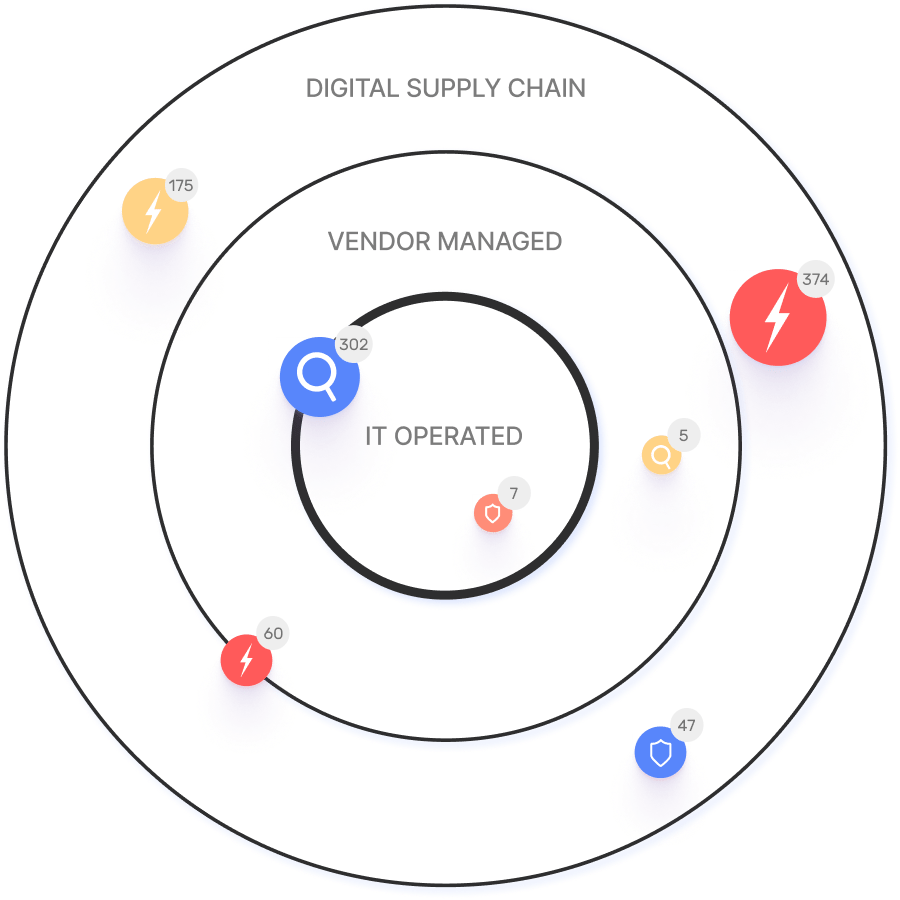Vulnerability Testing: Methods, Tools, and Best Practices
Vulnerability testing is the process of using a vulnerability scanner to uncover security weaknesses, such as software vulnerabilities and misconfigurations. These vulnerability scans can be performed using automated tools and provide a prioritized list of identified vulnerabilities.
In this article
Vulnerability scans are an important part of an organization’s security strategy because they help to eliminate “low-hanging fruit” that an attacker can easily exploit. If an organization identifies and patches vulnerabilities before an attacker can exploit them, then the attacker needs to work much harder to find a way into the organization’s systems.
Why is Vulnerability Testing Important?
Vulnerability testing is important because it gives an organization visibility into the ways that an attacker is most likely to target it. This allows the company to proactively manage its cybersecurity risk by applying important patches and closing these security gaps.
Vulnerability testing is more important than ever for several reasons, including:
- Growing Vulnerability Numbers: More new vulnerabilities are discovered each year, with over 40,000 reported in 2024 alone. As a result, attackers have more security gaps to target in an organization’s digital attack surface.
- Expanding IT Infrastructures: Most corporate networks are growing larger and more complex as companies adopt Software as a Service (SaaS) tools and other cloud offerings. This expands their digital attack surface and increases the potential impacts of a successful cyberattack.
- AI-Driven Attacks: As artificial intelligence (AI) grows more sophisticated, it is increasingly able to independently identify, explore, and exploit vulnerabilities. As a result, attackers are able to exploit vulnerabilities faster and at scale, increasing their probabilities of successful attacks.
- AI Development: Companies are increasingly using AI to develop code, but this code is prone to errors and bugs. Without careful review by human developers, this will likely increase the rate of vulnerabilities in production code.
Vulnerability Testing Methods
Vulnerability testing can be performed in various ways designed to identify different threats within an organization’s IT infrastructure. Some common types of vulnerability testing include:
- Active Testing: Active testing involves directly interacting with a system to identify potential vulnerabilities. For example, this could include performing a port scan or fuzz test.
- Passive Testing: Passive testing is a less intrusive method that doesn’t involve interacting with the target system. Instead, the tool looks at network traffic or configuration files for signs of potential security gaps.
- Network-Based Testing: Network-based testing examines networking devices for potential security gaps. Often, this involves active testing, including port scans and network mapping.
- Application-Based Testing: Application-based testing attempts to identify vulnerabilities in applications. This can be performed throughout the software development lifecycle (SDLC). For example, a development team can evaluate designs for potential risks, use Static Application Security Testing (SAST) to test source code before it is committed to a repository, and perform Dynamic Application Security Testing (DAST) on release candidates.
Vulnerability Testing Tools
Numerous tools exist for performing vulnerability scans. Some of the most common and widely used include:
- Nmap: Nmap is a port scanner and network mapper that can be used for network-based testing. It is a highly configurable tool that can be used to automatically identify a range of applications and operating systems.
- Nessus: Nesses supports vulnerability scanning for databases, web servers, and artwork devices. It can also audit configurations and offers extensive reporting capabilities.
- OpenVAS: OpenVAS is an open-source vulnerability scanner. It can scan a wide range of systems, and supports both authenticated and unauthenticated scanning.
- Wireshark: Wireshark is a network traffic analysis tool that can be used for passive testing. It can read traffic live or from a file and automatically dissects a wide range of network protocols.
Best Practices for Effective Vulnerability Testing
Vulnerability testing is an important step toward gaining control over an organization’s digital attack surface and cybersecurity risk exposure. Some best practices include:
- Define Scope Clearly: Vulnerability testing tools look at a particular application or range of IP addresses. A well-defined scope is important to protect against potential visibility gaps.
- Test Regularly: Vulnerability scans perform a snapshot of the current vulnerabilities that exist in an organization’s environment, but this can change rapidly. Performing regular tests ensures that risk management programs have access to up-to-date information.
- Use Various Testing Methods: Each testing method can only identify certain types of vulnerabilities. A combination of methods is needed to achieve comprehensive visibility into potential security risks.
- Prioritize Findings: Vulnerability scanners often find large lists of vulnerabilities, often more than an organization can effectively remediate. Prioritizing vulnerabilities based on risk ensures that the biggest threats are addressed first and allows the business to decide whether or not a particular vulnerability requires remediation.
- Automate Testing: Testing should be automated where possible to increase frequency and decrease associated overhead. This includes both network testing and building testing into CI/CD pipelines.
Challenges with Current Vulnerability Testing Tools
Traditional vulnerability testing tools are designed to do exactly what their name says: test for software vulnerabilities. With the volume of software vulnerabilities on the rise, this is an important component of attack surface management (ASM).
However, traditional vulnerability assessment tools have significant limitations. These include:
- Constrained Scope: Vulnerability testing tools are designed to identify software vulnerabilities; however, these aren’t the only threats in an organization’s digital attack surface. Misconfigurations, security control gaps, and other risks will likely be missed by these tools.
- Lack of Validation: Vulnerability scanners identify vulnerabilities based on the presence of a piece of software with a known Common Vulnerabilities and Exposures (CVEs) record. However, they don’t confirm that the vulnerability poses a real threat to the organization.
- Severity-Based Prioritization: Vulnerability testing tools prioritize vulnerabilities based on their Common Vulnerability Scoring System (CVSS) scores. However, this fails to capture the real impact of a vulnerability on the organization since a more “severe” vulnerability on a less vital asset could have a lower real-world impact than a lower severity vulnerability on a more important one.
- Stale Results: Vulnerability scans provide insight into vulnerability exposure at a particular point in time. Since an organization’s applications and infrastructure evolve quickly — especially with DevOps design processes — a vulnerability assessment could be out-of-date soon after being executed.
Prioritizing and Assessing Vulnerabilities with IONIX ASM solution
Vulnerability management is an essential component of a corporate cybersecurity strategy, as evidenced by the numerous new vulnerabilities discovered each year. Vulnerability testing attempts to manage this risk; however, it has significant downsides. A focus solely on vulnerabilities misses other threats, and these tools produce numerous false positives and prioritize threats that may pose little or no real risk to the business.
IONIX’s comprehensive attack surface management (ASM) solution offers businesses more holistic visibility into their real-world attack surfaces. Key capabilities include:
- Attack Surface Discovery: IONIX automatically discovers assets and vulnerabilities from the attacker’s perspective.
- Risk Assessment: Continuous monitoring and risk assessment provide up-to-date visibility into digital attack surfaces.
- Risk Prioritization: Threats are prioritized based on real business impacts, enabling fatigued and understaffed security teams to focus on the most urgent risks.
- Risk Remediation: Automated remediation of critical and exploitable risks to rapidly close security gaps.
To learn more about how IONIX can help your organization manage its vulnerability and risk exposure, book a demo.


